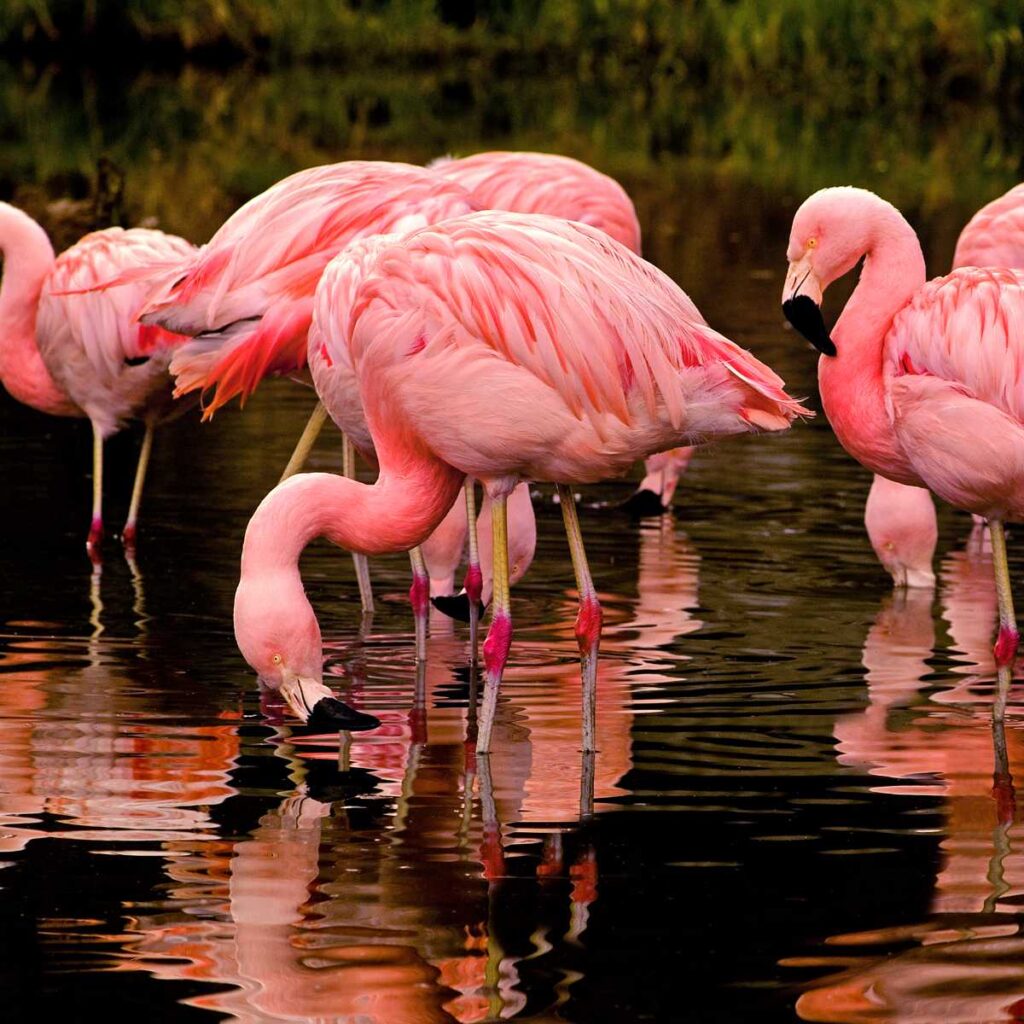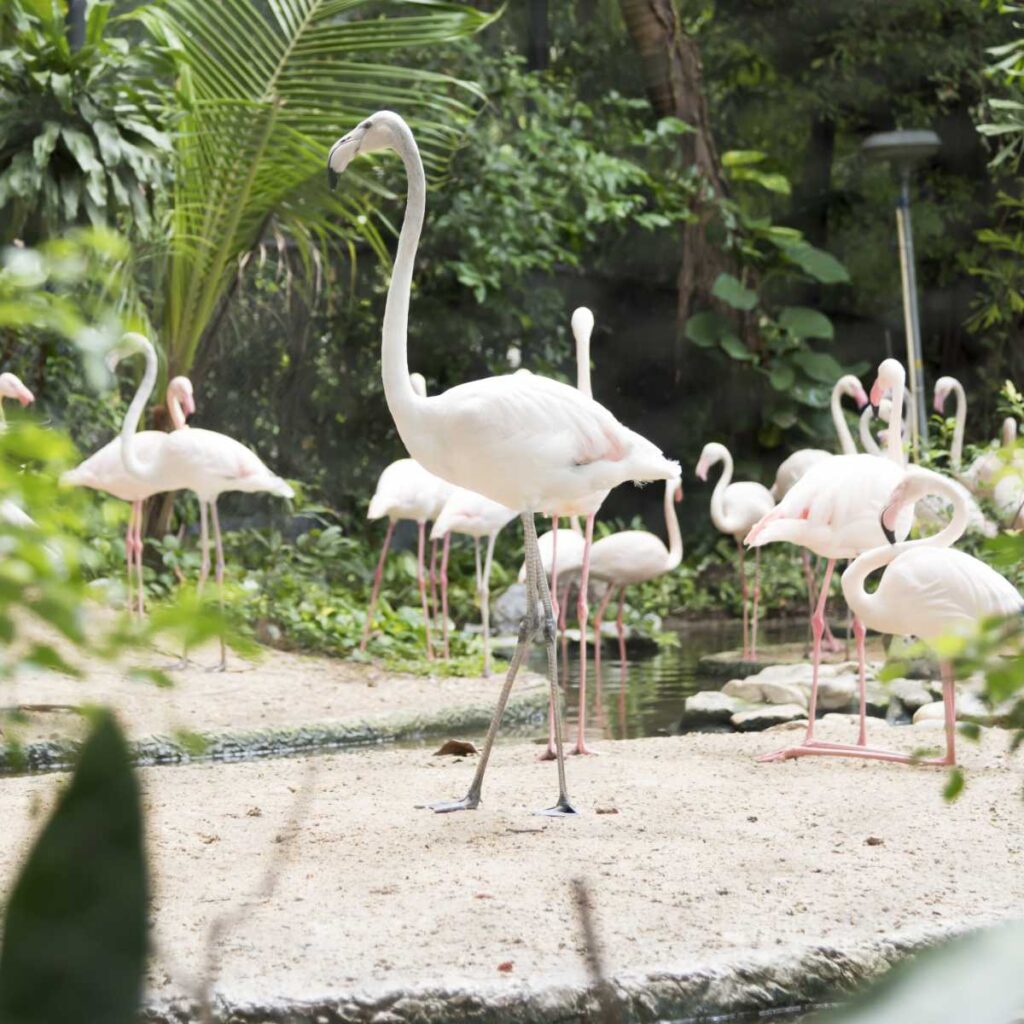Last Reviewed and Updated on August 18, 2022
Birds come in many shapes, sizes, and colors, and when it comes to colors, flamingoes really do stand out. Their colors range from light pink to almost red, but this isn’t the color they are born with. Why are flamingos pink, and why are baby flamingos not pink? Let’s find out.

Flamingoes – the glorious pink birds
There are six living species of flamingos, each species unique on its own. Depending on their habitat, there are variations in color, both in the pinkness of their feathers and the number of black feathers.
When they are born, flamingoes can be white to grayish red; they get their signature feather colors as they mature.
You may also like: facts about flamingoes
Why are flamingos pink?
Most people know that flamingos are pink, but few know why. The pink color comes from the food that flamingos eat (and the food their food eats) – specifically, shrimp and other crustaceans.
The shrimp and crustaceans, as well as flamingoes, feed on plankton and algae. The plankton, as well as algae, contain yellow, red, and orange pigments called carotenoids, which are responsible for the pink color you see on flamingo feathers.
Flamingoes get the carotenoids directly by eating plankton and algae, as well as “second-hand” by eating other animals that feed on plankton and algae.
When flamingos eat carotenoids, the color enzymes are broken down into pigments by the liver enzymes. The broken down pigments get deposited in their feathers, giving them their iconic pink coloration.
Why does the color vary between species or locations?
This has to do with the diet as well. The primary source of the carotenoids for a flamingo is the plankton and algae, followed by the shrimp and other crustaceans. The more pigment a flamingo ingests, the more pink or reddish pink their feathers will be.
A flamingo that has more algae in its diet (the primary source of carotenoids) will ingest more pigment than a flamingo whose diet consists primarily of algae-eating animals (second-hand carotenoids).
Within a group of flamingoes in nature, the more vivid the color of the animal, the healthier it is. A pale flamingo in a group of bright pink-colored flamingoes is usually malnourished or sick. This does not apply to flamingoes in captivity, as they can be completely healthy and almost white if their food does not have carotenoids.

